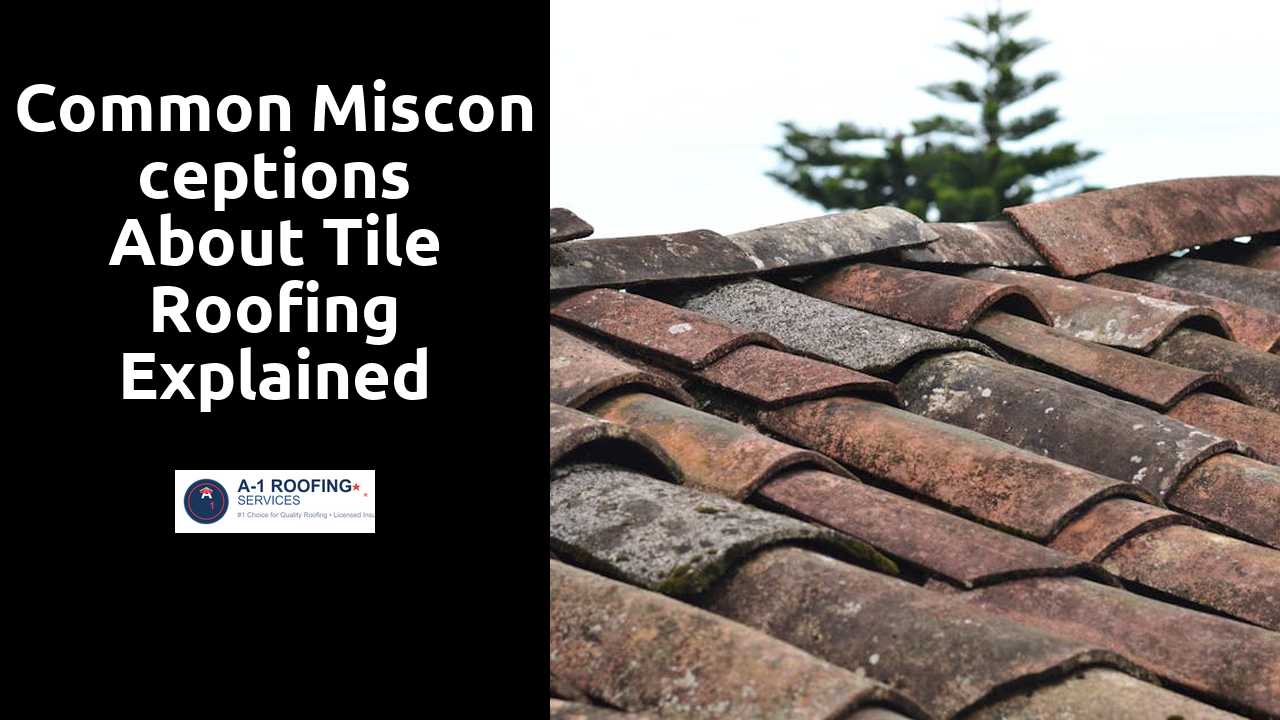
Common Misconceptions About Tile Roofing Explained
Table Of Contents
Cost Factors
The costs associated with tile roofing can vary significantly based on several factors. The materials used play a crucial role in determining the overall price. Options range from ceramic and concrete to natural clay tiles, each with unique characteristics and price points. Additionally, regional differences in labor costs can influence the total expenditure. Homeowners should also account for any underlying repairs needed before installation, increasing the initial investment.
While the upfront cost of tile roofing may seem higher than other roofing materials, it’s important to consider the long-term benefits. Tile roofs typically have a longer lifespan than asphalt shingles, often lasting 50 years or more with proper maintenance. This durability can lead to lower replacement costs over time. Furthermore, tile roofing can also enhance a home's energy efficiency, potentially reducing heating and cooling expenses. Therefore, evaluating tile roofing as a long-term investment may reveal its cost-effectiveness.
Have a peek at this blog for further readings.
What Are the Costs Associated with Tile Roofing?
The initial investment for tile roofing is typically higher than that of traditional materials like asphalt shingles. Factors contributing to the overall cost include the type of tile selected, which can vary from clay and concrete to slate. Labor costs also play a significant role, as experienced installers are often needed due to the specific requirements of tile placement. Additionally, the complexity of the roof’s design may lead to an increase in the installation price.
Long-term benefits can often offset the initial expenses associated with tile roofing. These roofs are known for their durability and longevity, often lasting over fifty years with proper maintenance. This extended lifespan means homeowners may find themselves spending less on repairs over time. Energy efficiency is another consideration; some types of tile can help regulate indoor temperatures, potentially reducing heating and cooling costs.
Aesthetic Appeal
The distinct appearance of tile roofing contributes significantly to its popularity among homeowners. Available in various styles, colors, and textures, tile roofs can complement a wide range of architectural designs. They provide an opportunity for personalization, allowing homeowners to choose options that enhance their property's character. From traditional Mediterranean aesthetics to modern interpretations, tile roofing adapts well to diverse tastes.
Beyond their aesthetic versatility, tile roofs offer a sense of permanence and elegance. Their inherent durability adds a sophisticated touch to any structure, suggesting longevity and strength. This perception can enhance curb appeal, making homes with tile roofs more attractive to potential buyers. The visual impact of a well-installed tile roof can elevate the overall look of a property, distinguishing it within neighborhoods and contributing to its market value.
How Does Tile Roofing Enhance Home Design?
Tile roofing offers a unique aesthetic charm that can dramatically elevate the appearance of any home. Available in a variety of colors, textures, and styles, tile can complement different architectural designs, from traditional to modern. Its natural materials and handcrafted look give roofs a distinct, upscale vibe that is often associated with luxury. Homeowners have the option to select tiles that mimic natural elements like clay or slate, adding a sophisticated touch to their roofs.
Additionally, the dimensionality and pattern possibilities of tile roofing can create impressive visual interest. The layered design of tiles helps in breaking up the roofline, making it visually appealing from both street level and higher vantage points. This versatility allows for a customized look that can enhance a home's overall exterior. Tile roofing can also reflect personal style and preferences, making it a standout feature in residential neighborhoods while ensuring durability and long-term value.
Installation Process
Tile roofing installation involves several critical steps to ensure durability and longevity. The process begins with a thorough inspection of the existing roof structure. Any necessary repairs are conducted to create a stable foundation. Next, a suitable underlayment is applied to provide protection against moisture. This layer is essential for preventing leaks and enhancing the overall performance of the tile roof.
After preparing the base, the tiles are carefully laid out according to the design specifications. Each tile must be properly aligned to maintain an aesthetically pleasing appearance. Fastening the tiles securely is crucial to withstand harsh weather conditions. Finally, the installation is completed with an inspection to confirm that everything meets quality standards. Regular maintenance is recommended to keep the roof in optimal condition and prolong its lifespan.
What Steps Are Involved in Installing Tile Roofing?
The installation of tile roofing begins with a thorough inspection of the existing roof structure. Any damage must be repaired to ensure a solid foundation for the new tiles. Once the surface is prepared, underlayment is typically installed. This protective layer acts as a barrier against moisture and enhances the roof's overall durability.
After the underlayment is in place, the tiles are laid starting from the bottom edge of the roof and working upward. Each tile must be carefully positioned to ensure proper alignment and effective drainage. Fastening methods vary depending on the tile material, with some requiring nails or clips for secure attachment. Finally, a proper ventilation system is often installed to maintain airflow and prevent issues with moisture buildup over time.
Related Links
Innovative Tile Roofing Technologies and TrendsThe Best Tile Roofing Styles for Different Climates